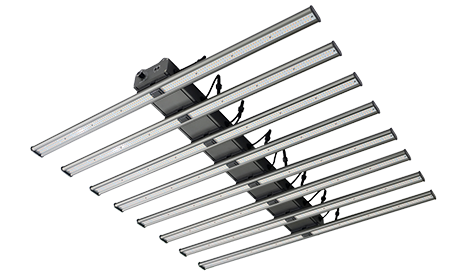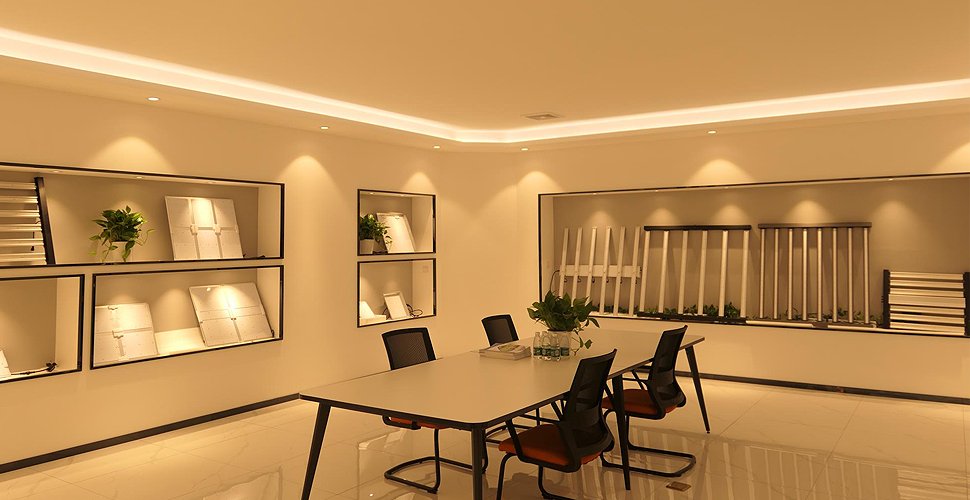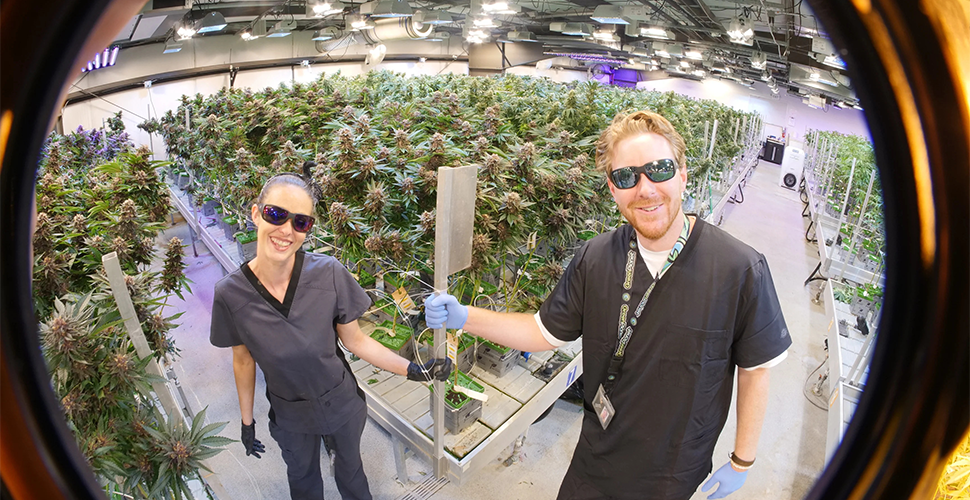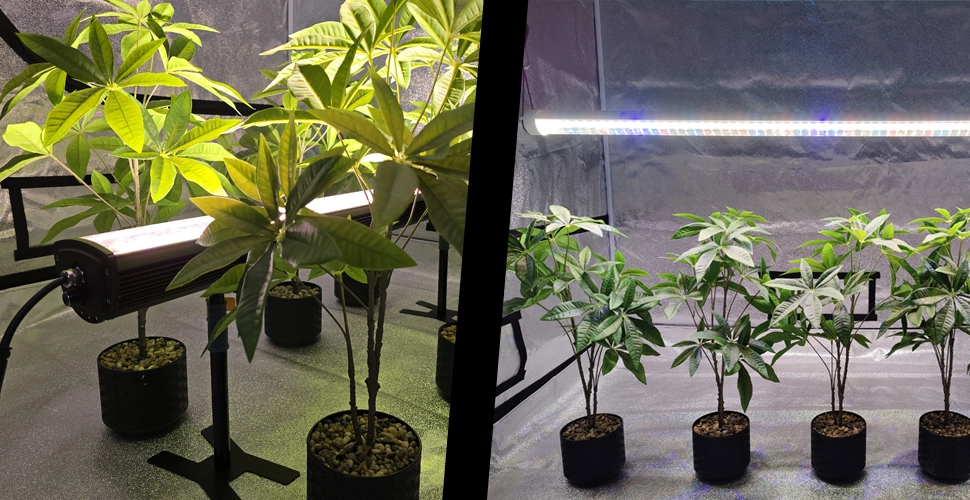Оглавление
Сегодня, освещение для выращивания растений в помещении являются неотъемлемой частью выращивания растений в помещении, и вы увидите их повсюду.
Вы когда-нибудь замечали интересное явление? Растения растут хорошо и здоровыми при естественном освещении, которое, кажется, не имеет никакого цвета, но почему лампы для выращивания фиолетовые, а некоторые кажутся белыми?
На самом деле светодиодные фонари не фиолетовые, они просто кажутся фиолетовыми в наших глазах. Поскольку лампы для выращивания в помещении излучают синий и красный свет высокой интенсивности, который представляет собой смесь длин волн синего и красного цветов в цветовом спектре, именно это означает фиолетовый светодиод. В частности, длина волны синего света важна для вегетативного роста, а длина волны красного цвета важна для цветения и плодоношения.
В этой статье мы обсудим причины использования фиолетовых светодиодных ламп для выращивания растений и стоит ли оно того. Давайте погрузимся!
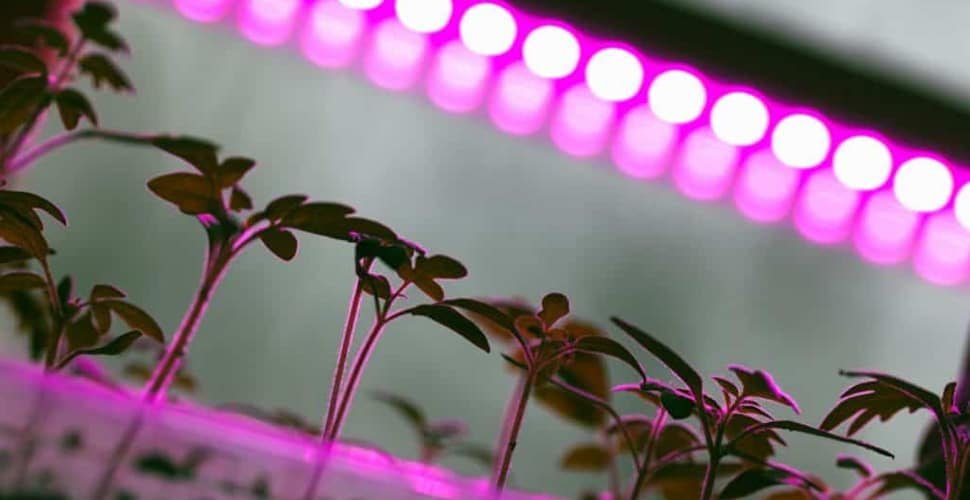
Что делает лампочки для выращивания растений фиолетовыми?
Светодиодные лампы состоят из различных комбинаций длин волн, которые производят свет, который вы обеспечиваете свои растения. Но для любого набора цветов существует не одна длина волны. Производители светильников для выращивания растений определят определенные длины волн цвета, которые полезны для роста растений для создания светодиодных светильников для растений. Их цель — создать свет, полезный для ваших комнатных растений, и постараться избежать света, в котором растения не нуждаются.
Длина волны и цвет
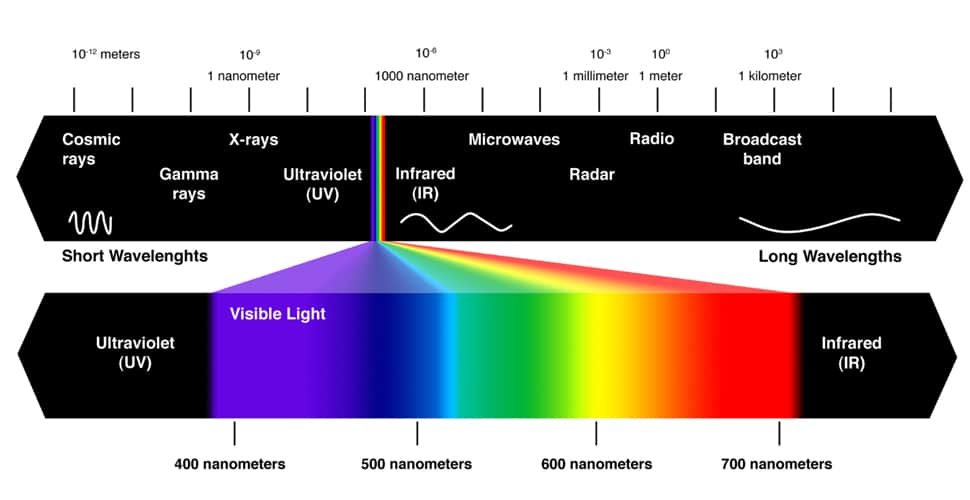
БлДлина волны света ue составляет от 430 до 500 нм.
Длины волн красного света составляют от 625 до 740 нм.
Длина волны УФ составляет от 100 до 450 нм.
Существует три типа длин волн УФ-излучения, два из которых используются в ростовых камерах: УФ-А и УФ-В.
- УФ-С: от 100 до 290 нм.
- УФ-В: от 290 до 320 нм.
- УФ-А: от 320 до 400 нм.
Длины волн дальнего красного цвета составляют от 740 до 1050 нм.
Фиолетовый цвет, излучаемый светодиодными лампами, представляет собой комбинацию синих и красных длин волн света, из которых состоит большинство светодиодов. Исследования показали, что обе длины волн имеют решающее значение для развития растений, поэтому производители светодиодных светильников для выращивания растений используйте несколько красных и синих длин волн в своих светильниках для выращивания растений.
Длина волны синего света
- Длины волн синего света способствуют здоровью растений, регулируя рост.
Синий цвет ламп для выращивания растений препятствует удлинению стебля и полезен для карликовых растений. Стебли лиственных растений, подвергающихся воздействию синего света, короче, а листья этих растений темно-зеленые.
Следовательно, свет синего диапазона также влияет на толщину листьев и содержание хлорофилла. Вы сможете выращивать растения с более толстыми, крупными и темными зелеными листьями в зависимости от спектральных потребностей растения.
- Длина волны синего цвета также влияет на окраску листьев.
Комнатное растение с фиолетовыми листьями, подобное лесным анютинам, нуждается в синем излучении. В противном случае он может дать зеленые листья без синего света. Аналогичным образом, листовая зелень, такая как капуста и брокколи, будет производить более полезные питательные вещества при достаточном количестве синего света, получая более адекватное количество питательных веществ, таких как витамины или антиоксиданты.
- Синий свет управляет цветением растений.
Свет высокой интенсивности (20 мкмоль) может способствовать цветению растений длинного дня, таких как шпинат, капуста и сельдерей. Он также может препятствовать цветению растений короткого дня, таких как хризантемы и кливия.
Длина волны красного света
- Длины волн красного света стимулируют фотосинтез и улучшают рост растений.
Другими словами, красный свет имеет наибольшую эффективность в преобразовании электричества в фотосинтезирующие фотоны. Это связано с тем, что красный свет обычно сильнее поглощается зелеными пигментами растений.
Растения, подвергающиеся большему количеству красного света, вырастут выше. Вы можете использовать красный свет, чтобы способствовать или препятствовать выдвижению стебля. Они также могут давать более тонкие листья и более крупные и высокие растения.
Советы: Вы должны знать, что вы должны контролировать красный свет, потому что слишком яркий свет может привести к тому, что растения станут слишком высокими и тонкими.
- Он отвечает за увеличение скорости фотосинтеза в растениях.
Красный свет фиолетовых лампочек также влияет на цветение растений, и именно благодаря красному свету растения получают больше всего энергии.
Комбинация длин волн синего и красного света
По отдельности синий свет помогает растениям расти, а красный свет способствует цветению и фотосинтезу. Желтый и зеленый поглощают меньше всего. Растения отражают этот свет и поэтому имеют зеленый цвет.
Однако ведущие производители светильников для выращивания растений не производят светильники для растений, которые содержат все длины волн в ходе производственного процесса. Потому что растения не поглощают весь свет одинаково. И они выберут правильный и конкретный цвет света, и вы сможете максимально эффективно использовать свои светодиодные лампы для выращивания растений в помещении. Используйте правильные источники света, чтобы экономить большое количество электроэнергии.
Комбинация длин волн синего и красного света обеспечивает ваши растения светом, необходимым для одновременной стимуляции всех моделей роста, а это именно то, что нужно вашим растениям для процветания.
Их сочетание важно, поскольку позволяет растениям следовать циркадным ритмам даже в помещении. Позволяя растениям почти знать, когда им взбодриться, а когда отдохнуть, так же, как они это делают в жизни на открытом воздухе.
После выбора правильных ламп для выращивания растений Что касается комнатных растений, вы также должны обратить внимание на расстояние, на котором вы их размещаете, и правильное место для их размещения. повесить их и как их использовать для максимизации производительности.
Экономические соображения
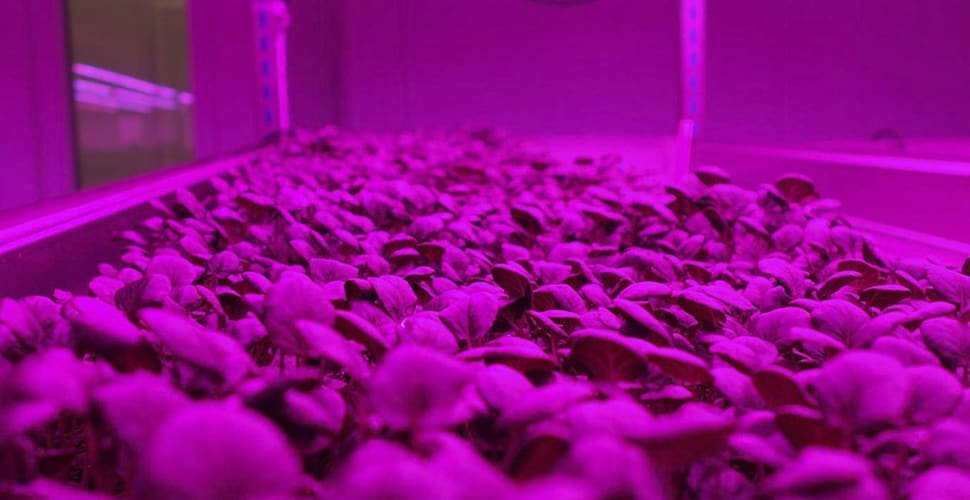
Фиолетовые лампы для выращивания растений не имеют экономического смысла для домашних производителей
С коммерческой точки зрения, красные и синие светодиодные чипы являются самыми дешевыми в покупке. Первые производители светильников для выращивания растений использовали эту конкретную комбинацию спектров для разработки любого рецепта освещения, который они хотели. Поскольку в то время светодиоды были дорогими, некоторые производители сосредоточились только на производстве тех красных и синих ламп, которые были абсолютно необходимы для растений.
Но за последнее десятилетие стоимость светодиодных технологий упала, а стоимость производства и эксплуатации этих светильников резко упала.
Сегодня типичная синяя или красная лампа мощностью 10–30 Вт для растений обходится менее чем в 20 долларов в год за электроэнергию. По сравнению с сегодняшним освещением для растений полного спектра той же мощности, экономия электроэнергии при использовании фиолетового освещения для растений всего на доллар или два меньше в год, чем при использовании светильника полного спектра.
Разница в экономии электроэнергии недостаточно велика, чтобы сделать экономику фиолетовых ламп для выращивания растений значимой для домашних производителей.
Сегодня обычная фиолетовая лампа для выращивания растений мощностью 10–30 Вт стоит менее 20 долларов в год за электроэнергию. По сравнению с сегодняшними лампами для выращивания растений полного спектра той же мощности, экономия электроэнергии при использовании фиолетового освещения для растений всего на доллар или два меньше в год, чем при использовании лампы полного спектра. Разница в стоимости электроэнергии незначительна. Таким образом, мы не думаем, что экономика фиолетовых ламп для выращивания растений имеет смысл для домашних производителей.
Но если вы планируете использовать этот фиолетовый свет для растений по всему складу и проводить операции вертикального земледелия, то это может иметь более важное значение. Фиолетовый свет приносит много пользы, но, учитывая другие его недостатки, мы не думаем, что это так важно, как раньше.

Красный и синий спектр не уникален
Благодаря исследователям в этой области, исследовать и наука о том, как растения реагируют на свет, за последние 20 лет обогатили наши знания о свете.
- UVA/UVB влияет на эфирные масла, ароматизаторы и ароматизаторы.
- Зеленый свет очень хорошо проникает в крону и листья, превосходя красный и синий.
- Дальний красный является особенно хорошим дополнением к синему и помогает ускорить размножение растительных клеток.
Фиолетовый свет для выращивания растений неприятен
Существует стандарт того, насколько комфортен и приятен свет для человеческого глаза, который мы называем CRI или индексом цветопередачи. Проще говоря, CRI определяет, насколько естественно выглядит цвет объекта при разном освещении.
Если свет кажется человеческому глазу странным, слишком резким и неестественным, его значение CRI низкое. Это также может означать, что это просто комбинация красных и синих светодиодных чипов.
Мы также узнали, что фиолетовые лампы для выращивания растений излучают узкий спектр света, обеспечивая растения определенной длиной волны света, необходимой им для роста и процветания. Хотя красный или синий свет для растений подходит для внутреннего садоводства, его цветовая температура может сделать людей менее комфортными в течение длительного периода времени. Это может привести к перенапряжению глаз или головным болям. Если вы также используете фиолетовый светильник для растений, рекомендуется во время использования брать с собой очки, даже если это самые обычные солнцезащитные очки.
Напротив, свет, который выглядит естественно приятным для человеческого глаза, имеет высокое значение CRI и может состоять из множества различных цветовых комбинаций светодиодных чипов.
Подведение итогов
Надеюсь, к настоящему времени вы нашли ответ на вопрос: почему лампы для выращивания растений фиолетовые? И надеемся, что эта статья ответит на вопрос, стоит ли вам покупать фиолетовую лампу для растений.
Сегодня большинство ламп для выращивания растений больше не фиолетового цвета. По нашему мнению, лучшим выбором является светодиодное освещение полного спектра, которое обеспечит оптимальное здоровье растений и более комфортную среду.
Если вы живете в очень жарком районе и хотите, чтобы внутри вашего дома было прохладнее, ищите светильники с температурой 5000–5500 К. Спектральное распределение этих источников света склоняется к синему цвету, а температура ламп для выращивания растений будет относительно ниже.
Если вы живете в более прохладном климате или у вас меньше места, мы рекомендуем более теплую температуру света в пределах 2700°С. – Диапазон 3500К. Они перекошены красным и имеют более теплый свет, возможно, лучший для плодоношения и цветения.
Если вы хотите узнать больше о том, как найти идеальный светильник для выращивания комнатных растений, мы рекомендуем Полезны ли светодиодные лампы полного спектра для растений?
Джейс
Будучи менеджером по цифровому маркетингу в AUXGROW, Джейс сочетает в себе страсть к гидропонным системам и опыт в области светодиодных светильников для выращивания растений. Обладая практическим опытом и глубоким пониманием, Джейс проведет вас через мир устойчивого земледелия.

